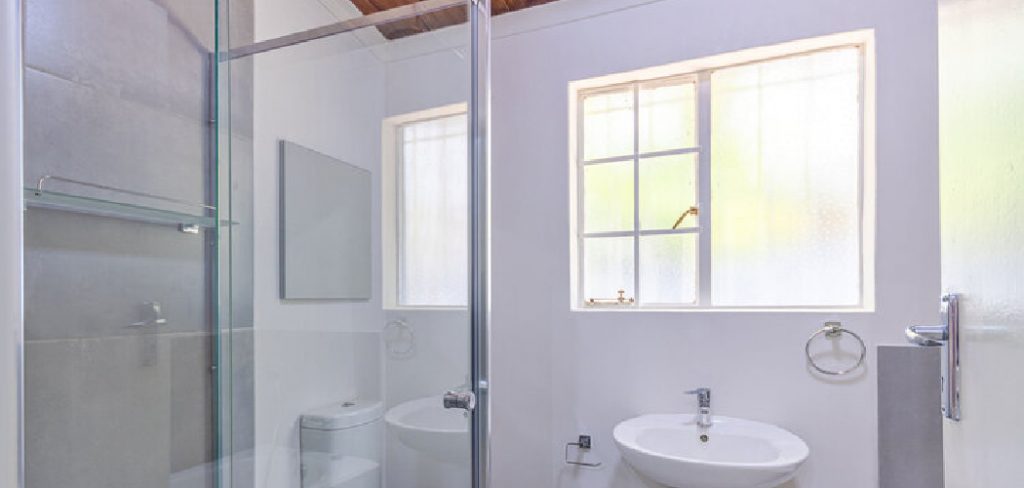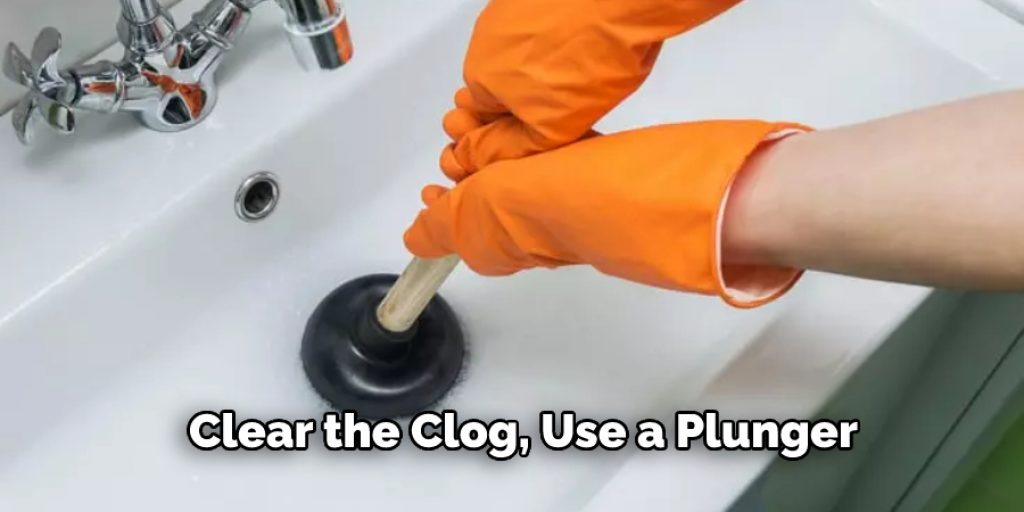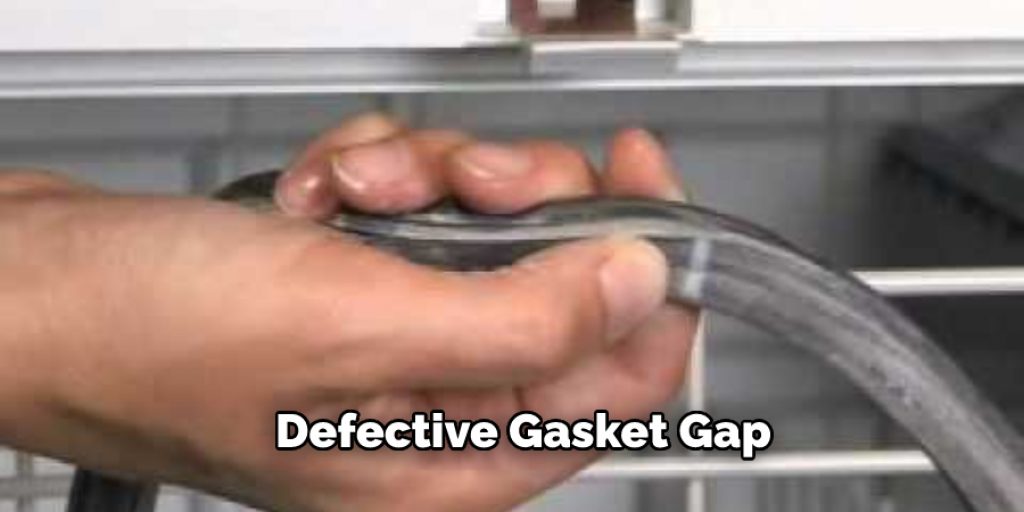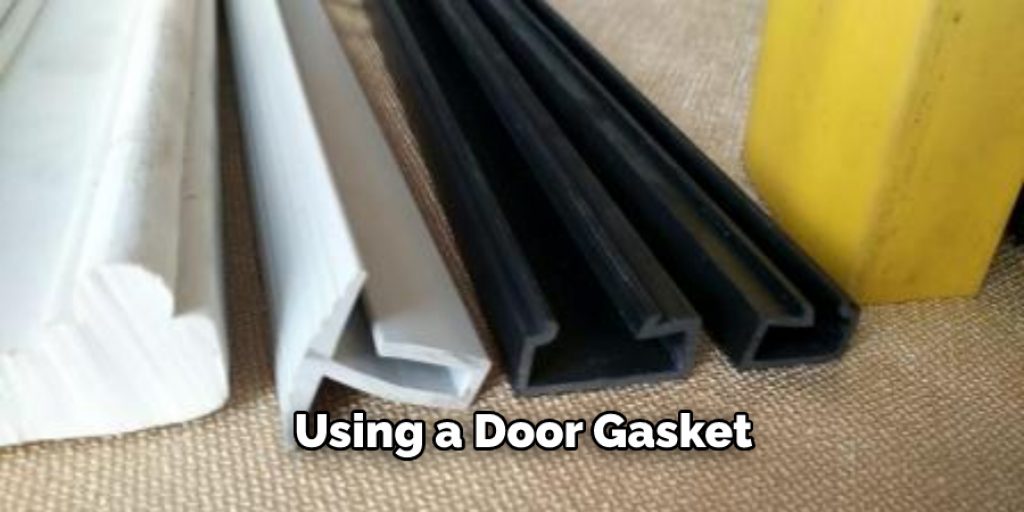If you have a gap in your shower door, there are a few ways how to fix gap in shower door. You can caulk the area, use a shower door sweep, or install a new shower door. Each method has its own benefits and drawbacks, so you’ll need to decide which is best for your situation. Caulking is the least expensive option, but getting a tight seal can be messy and difficult.
Sweeps are easy to install and don’t require any tools, but they can wear out over time. New shower doors are more expensive than either of the other methods, but they provide the best seal and look overall. Whichever method you choose, follow the instructions carefully to avoid damaging your shower door or causing other problems.

Summary: Gap in shower doors can be a source of water leaking and dampness. To fix this, you’ll need to adjust the screws to secure the gap and make sure the door opens and closes properly.
First remove any dirt or debris from the area and then use a screwdriver to unscrew both sides of the shower door track. Next, realign the tracks so they close without creating too large a gap between them. Finally, re-tighten all screws before sliding the door back into place.
8 Reasons That Causes Gap in Shower Door
1. Improper Installation
One of the main reasons for a shower door gap is improper installation. If the door is not installed correctly, it will not fit snugly against the seal and will create a gap.
2. Improper Measurement
It is essential to take accurate measurements when ordering a shower door. If you measure incorrectly, the door may not fit properly and will leave a gap. Likewise, if you have an existing shower door and it is installed improperly, it may be causing the gap. To fix this, have a professional installer come to your home to install the door properly.
3. The Door Is Not Level
If the shower door is not level, it will not close properly and leave a gap. Adjust the screws on the hinges that attach the door to the frame to fix this. Turn the screws clockwise to raise the door and counterclockwise to lower it.
4. Faulty Seal
Another common reason for a shower door gap is a faulty seal. If the seal is not tight or if it has been damaged, the door will not close properly, resulting in a gap. To fix this, you will need to replace the seal.
5. Clogged Drain
If the shower drain is clogged, it can cause water to back up and leak out from under the shower door. To clear the clog, use a plunger. If that doesn’t work, use a drain snake to clear the blockage. If water continues to leak out from under the shower door, despite taking steps to correct the underlying causes, you may need to install a new shower door.

6. The Door Is Not Correctly Aligned
If the shower door is not in the correct position, there may be a space between the door and the wall. To fix this, use the screws at the top and bottom of the door to adjust the door until it is in the correct position. Once it is in the correct position, tighten the screws again.
7. Faulty Hinges
If the hinges are not properly adjusted or if they are faulty, the shower door may not close properly, leading to a gap. The door can be adjusted by tightening or loosening the screws on the hinges. If the hinges are faulty, they will need to be replaced.
8. Defective Gasket
A defective gasket can also cause a shower door gap. If the gasket is not sealing properly, water and humidity will be able to seep through, causing the door to warp and create a gap. To fix this, you will need to replace the gasket.
You Can Check It Out to Fix Low Spots in Shower Floor

10 Steps on How to Fix Gap in Shower Door
1. Assess the Gap:
Begin by examining the gap in the shower door to determine its size and location. The gap may be along the sides, top, or bottom of the door. Identifying the type of gap will help you choose the appropriate solution for fixing it.
2. Gather Necessary Tools and Materials:
To fix a gap in a shower door, you may need the following tools and materials:
- Screwdriver (Phillips or flathead, depending on the shower door hardware)
- Tape measure
- Shower door sweep or seal (appropriate for the type of gap and door)
- Scissors or utility knife
- Glass cleaner and cloth or paper towel
- Silicone sealant (if necessary)
- Level (optional)
3. Tighten or Adjust the Door Hardware:
In some cases, a gap in the shower door may be caused by loose or misaligned hardware. Check the screws and brackets securing the door in place and tighten them if necessary. If the door is not level, you may need to adjust the door hinges or brackets to realign it properly.
4. Measure the Gap:
Use a tape measure to determine the size of the gap in the shower door. This will help you choose the correct size of shower door sweep or seal to close the gap effectively.
5. Select the Appropriate Door Sweep or Seal:
Choose a door sweep or seal designed for the type of gap and shower door you have. There are various options available, including adhesive-backed sweeps, screw-on sweeps, and snap-on seals. Make sure to select one that is the right size and shape for your door.
6. Clean the Shower Door:
Before attaching a new sweep or seal, clean the shower door and surrounding area with glass cleaner and a cloth or paper towel. This will help the new sweep or seal adhere properly and ensure a tight seal.
7. Cut the Door Sweep or Seal to Size:
Using scissors or a utility knife, carefully cut the door sweep or seal to the correct length based on your measurements. Be sure to cut it slightly longer than the actual gap to ensure a snug fit.
8. Attach the Door Sweep or Seal:
Following the manufacturer’s instructions, attach the door sweep or seal to the shower door. For adhesive-backed sweeps, remove the protective backing and press the sweep firmly onto the door. For screw-on sweeps, position the sweep and secure it with the provided screws. For snap-on seals, simply press the seal onto the door’s edge until it clicks into place.
9. Apply Silicone Sealant (If Necessary):
If there are any remaining gaps after attaching the door sweep or seal, consider applying a thin bead of silicone sealant to the area. This can help create a watertight seal and prevent water from leaking through the gap.
10. Test the Shower Door:
After allowing any applied sealant to dry according to the manufacturer’s instructions, test the shower door to ensure the gap has been effectively sealed. Open and close the door to check for any issues with the sweep or seal and to ensure it stays in place.
11. Regularly Inspect and Maintain the Shower Door:
To prevent future gaps or leaks, regularly inspect and maintain your shower door. Check the hardware for any signs of wear or looseness, and clean the door and seals to prevent the buildup of soap scum and mineral deposits.
By following these steps, you can effectively fix a gap in a shower door and prevent water leaks and damage. The process requires careful measurement, the right tools and materials, and attention to detail to ensure a proper seal. Regular inspections and maintenance will help keep your shower door in optimal condition and prevent future gaps from forming.
12. Replace Worn or Damaged Door Sweeps or Seals:
Over time, door sweeps and seals can become worn, damaged, or lose their effectiveness. Routinely inspect these components and replace them as needed to maintain a watertight seal and prevent leaks.
13. Adjust Shower Door Rollers (If Applicable):
If your shower door is a sliding type, the rollers may need adjustment to ensure smooth operation and proper alignment. Check the rollers for wear or damage and make any necessary adjustments to their height or position, following the manufacturer’s guidelines.
14. Install a Drip Rail (Optional):
As an additional measure to prevent water leaks, consider installing a drip rail at the bottom of the shower door. A drip rail directs water back into the shower enclosure when the door is opened, reducing the risk of water escaping through the gap.
15. Lubricate Door Hinges and Rollers:
To ensure smooth operation and prolong the life of your shower door, regularly lubricate the hinges and rollers with a silicone-based lubricant. This will help prevent squeaking, sticking, and wear on the moving parts.
16. Inspect the Shower Enclosure:
In addition to addressing the gap in the shower door, inspect the entire shower enclosure for potential leaks or damage. Check the caulking and grout lines around the shower pan, walls, and fixtures, and repair or replace any damaged or deteriorated areas.
17. Adjust the Shower Door Stop (If Applicable):
Some shower doors feature a door stop that prevents the door from swinging too far inwards or outwards. If the gap in your shower door is caused by the door not closing fully, adjusting the door stop may help resolve the issue.
18. Seek Professional Assistance:
If you are unable to fix the gap in your shower door using these steps or if the issue persists, consider seeking professional assistance. A qualified technician or installer can evaluate the problem, recommend a solution, and perform the necessary repairs or adjustments to ensure a proper seal and prevent water leaks.
By following these steps and addressing any additional issues, you can effectively fix a gap in your shower door and maintain a watertight, functioning shower enclosure. Regular inspections, maintenance, and prompt attention to potential problems will help prolong the life of your shower door and prevent future leaks or damage.

You Can Check It Out to Fix Glass Shower Door That Won’t Close
Some Helpful Tips and Suggestions
Here we have given some tips on how to fix gap in shower door
1. If the gap is less than ¼”, a bead of caulk may be sufficient to fix the problem. Apply the caulk around the edge of the door to meet the frame and smooth it out with your finger.
2. If you have a sliding shower door, ensure that the track is clean and free of debris. Also, check to ensure the door is running smoothly on the track. Finally, lubricate the track with a silicone spray if needed.
3. If you have an old metal shower door, it may be bent and cause a gap. You can try to straighten it out yourself or take it to a professional to have it fixed.
4. If you have a frameless shower door, the hinges may be the culprit. Make sure they are tight and that the screws are secure. You can also try adjusting the position of the hinges to see if that fixes the problem.
5. If you have a shower curtain, it may be hanging too low and not allowing the door to close properly. You can try raising the curtain rod or attaching a weight to the bottom of the curtain.
6. If all of the above fails, it may be time to replace the shower door. Talk to a professional to get advice on what type of door would be best for your needs.
You Can Check It Out To Fix Door Trim that Is Too Short
Frequently Asked Questions
Should the Inside of a Shower Door Be Caulked?
A lot of people think that the inside of a shower door should be caulked because water can drip down and collect on the floor. However, this is not always necessary or recommended because there are other ways to prevent water from coming in contact with the floor. For example, you could install ceiling hooks to keep towels off the ground, seal up any cracks around your showerhead with caulk or silicone, or use a rain sensor to turn on your overhead fan when it rains outside.
What is the Gap Between Door and Frame Called?
The Gap Between Door And Frame called will vary depending on the type of door and frame. However, some general tips that may help you include measuring your door and frame, consulting with a professional if you’re unsure how to proceed, and using the right tools for the job.
Why is There a Gap Between the Door and Frame?
There can be a number of reasons behind this gap between the door and frame, but the most common ones are that the door is old or poorly constructed, or that the frame was not properly installed. Old doors can warp over time, causing the gap to form. Poorly-installed frames can also cause this gap because they don’t fit well and are not level. If you notice this gap and think it might be a problem, it’s important to get it fixed as soon as possible.
You Can Check It Out to Fix Shower Rise
Conclusion
Shower door gaps can be fixed with various methods, but the most common is using caulk or sealant. This will fill in the gap and prevent water from leaking out. You can also try weatherstripping to seal the door or a shower curtain to cover the opening. If you have a sliding shower door, make sure it’s properly lubricated and that the tracks are clean and clear of debris.
Gaps at the bottom of your shower door can be fixed by installing a threshold insert or a sweep on the bottom edge of the door. No matter what method you choose, it’s important to fix any gaps in your shower door as soon as possible to avoid water damage. We hope this blog post on how to fix gap in shower door has been helpful. If you have any questions or want to know more, then feel free to comment below!
You Can Check It Out To Fix Lifeproof Case Screen Gap
